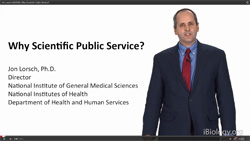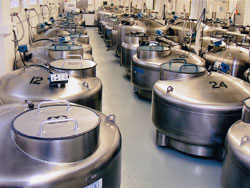Update: Revised content in this post is available on the NIGMS webpage, Talking to NIH Staff About Your Application and Grant.
During the life of your application and grant, you’re likely to interact with a number of NIH staff members. Who’s the right person to contact—and when and for what? Here are some of the answers I shared during a presentation on communicating effectively with NIH at the American Crystallographic Association annual meeting. The audience was primarily grad students, postdocs and junior faculty interested in learning more about the NIH funding process.
Who?
The three main groups involved in the application and award processes—program officers (POs), scientific review officers (SROs) and grants management specialists (GMSs)—have largely non-overlapping responsibilities. POs advise investigators on applying for grants, help them understand their summary statements and provide guidance on managing their awards. They also play a leading role in making funding decisions. Once NIH’s Center for Scientific Review (CSR) assigns applications to the appropriate institute or center and study section, SROs identify, recruit and assign reviewers to applications; run study section meetings; and produce summary statements following the meetings. GMSs manage financial aspects of grant awards and ensure that administrative requirements are met before issuing a notice of award.
How do you identify the right institute or center, study section and program officer for a new application? Some of the more common ways include asking colleagues for advice and looking at the funding sources listed in the acknowledgements section of publications closely related to your project. NIH RePORTER is another good way to find the names of POs and study sections for funded applications. Finally, CSR has information on study sections, and individual institute and center websites, including ours, list contacts by research area. We list other types of contact information on our website, as well.


 On November 5, we’ll host my favorite NIGMS science education event: Cell Day! As in previous years, we hope this free, interactive Web chat geared for middle and high school students will spark interest in cell biology, biochemistry and research careers. Please help us spread the word by letting people in your local schools and communities know about this special event and encouraging them to register. It runs from 10 a.m. to 3 p.m. EST and is open to all.
On November 5, we’ll host my favorite NIGMS science education event: Cell Day! As in previous years, we hope this free, interactive Web chat geared for middle and high school students will spark interest in cell biology, biochemistry and research careers. Please help us spread the word by letting people in your local schools and communities know about this special event and encouraging them to register. It runs from 10 a.m. to 3 p.m. EST and is open to all.
 . He also
. He also 

 I recently had the opportunity to talk to Phil Bourne, NIH’s associate director for data science, about some of the current Big Data to Knowledge (BD2K) initiative activities. I asked him how they tie together his vision of a digital enterprise for biomedical research and how they might benefit NIGMS grantees.
I recently had the opportunity to talk to Phil Bourne, NIH’s associate director for data science, about some of the current Big Data to Knowledge (BD2K) initiative activities. I asked him how they tie together his vision of a digital enterprise for biomedical research and how they might benefit NIGMS grantees.